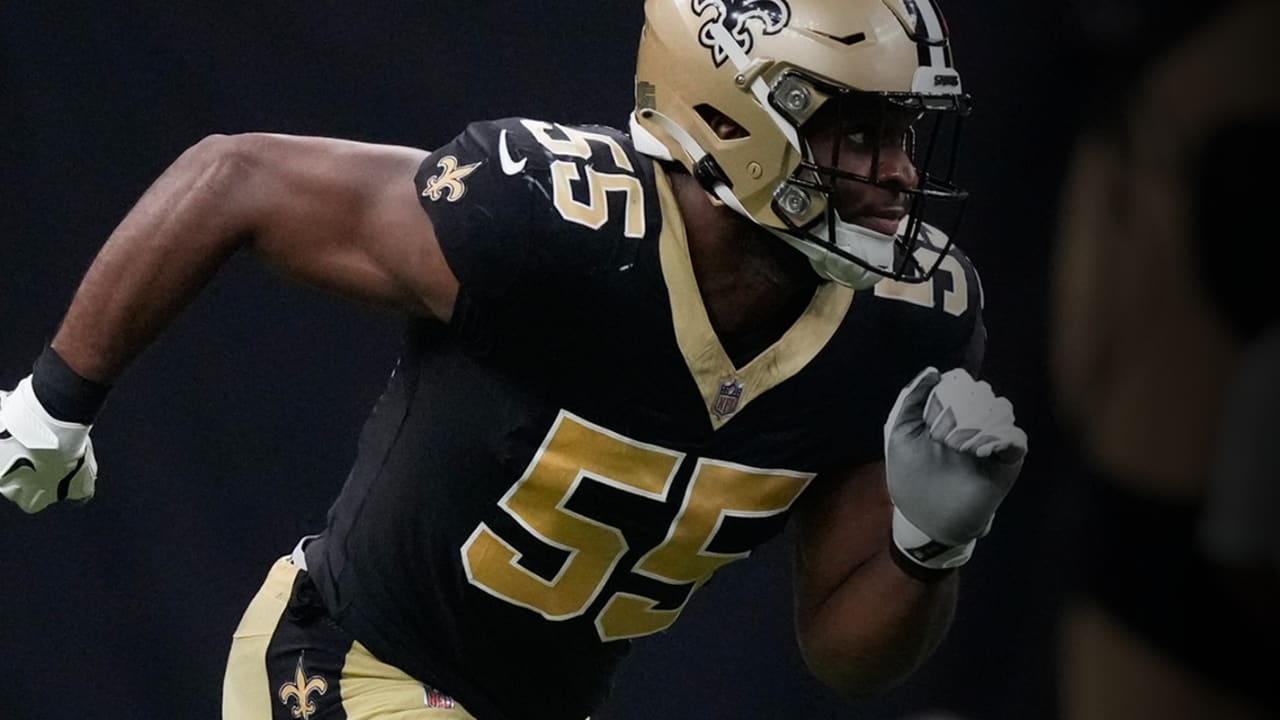The New Orleans Saints used a second-round choice in last year’s draft to select Isaiah Foskey, a defensive end out of Notre Dame. The 40th overall selection, Foskey was the eighth edge/defensive end drafted.
Projected as a potential late first-round pick coming into the draft, Foskey had 25.5 sacks and 28.5 tackles for loss over his last three years for the Fighting Irish. His 2022 campaign was especially impressive, with 11 sacks and 14 stops for loss.
Foskey was expected to add disruption to the New Orleans edge spot. The Saints had dealt with first-round disappointments at the position with Marcus Davenport (2018) and Payton Turner (2021) and were hoping to get a quality complement to veteran DE Cameron Jordan.
After struggling through the early portion of last year’s training camp, Foskey did show noticeable improvement over each of his three preseason games. However, he still had trouble reading edge runs and screens late into preseason and did not register a sack or pressure in three games.
Those issues extended into the regular season. Foskey’s limitations caused him to be inactive for five games, with a quad injury sidelining him for two other contests. When he was active, he didn’t see the field often and made virtually no impact.
Foskey appeared in 10 games but played only 13% (83) of the team’s defensive snaps. He recorded nine tackles, with none for loss, no sacks, and no pressures. He also struggled against the run when in the lineup. This for a defense that was desperate for playmakers on the edge.
The Saints had just 34 sacks last season, fourth fewest in the NFL, along with a disappointing total of 76 QB hits and 70 tackles for loss. Their defensive ends combined for a lowly total of 16 sacks, 41 QB hits, and 25 tackles for loss. Those numbers look even worse when you consider that DE Carl Granderson accounted for 8.5 sacks, 20 QB hits, and 14 tackles for loss by himself in a breakout year.
At 6’5″ and 265-Lbs., Foskey fits the preferred prototype the Saints have for their edge players. He also has impressive length and bend around the edge. At Notre Dame, Foskey was a consistent playmaker because of his excellent agility, quickness at the snap, and burst past blockers.
As we saw last season, Foskey must certainly set a better base against running plays and show better recognition of offenses. He also needs to further develop his counter moves as a pass rusher. Entering his second season, a much more polished player is not only expected but needed.
Cameron Jordan is a New Orleans franchise legend. Jordan will also turn 35 this offseason, enters his 14th season, and is coming off his worst statistical campaign since his rookie year. Payton Turner has only appeared in 15 of 51 contests since being selected in the first round.
Additionally, Tanoh Kpassagnon will miss at least half the year, if not the entire season, with an Achilles injury. Offseason addition Chase Young is recovering from neck surgery and has consistently never lived up to the hype of being the second overall pick in the 2020 NFL Draft.
There are some fans that are already writing off Foskey as an early round bust. It’s clear that the Saints do not feel the same way. Young was the only player added by the team at this position over the offseason, thereby showing at least some confidence in Foskey’s development, Turner’s ability to stay healthy, or Jordan rebounding.
Consider this: Cam Jordan had only one sack, two QB hits, and four tackles for loss as a rookie. Jordan followed that up with eight sacks, 13 QB hits, and eight tackles for loss in his second season and would go on to be a New Orleans Saints legend.
Nobody is suggesting that Isaiah Foskey will be ‘the next Cam’, but it’s also way too early to give up on him. If Foskey can showcase the abilities that made the Saints draft him in the second round, then New Orleans will have a much more disruptive edge position than they did in 2023.












